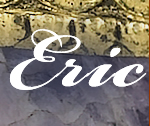 |
 |
||||||||||||||||||||
|
Before the advent of photography, the well-to-do used portrait miniatures to record the images of their loved ones. They are a particular favourite of Eric Knowles.Portrait miniatures offer a fascinating window of opportunity to connect with our past. Ever since I can remember I have always found it to be a totally mesmerising experience in being able to gaze upon the faces of men, women and children whose world we have inherited. Although the term miniature suggests a small painting, the word is actually derived from the Latin 'minium' which means 'reed lead' or 'vermilion' a popular pigment favoured by the illustrators of books and manuscripts in the 15th and 16th centuries. Miniature portraits began to gain prominence during the early 16th century, with Hans Holbein mastering the technique and providing likeness to the court of King Henry VIII. There is some speculation that Hans Holbein was inclined to flatter his subjects. The King himself found this tendency to be true after commissioning Holbein to produce a miniature portrait of his prospective bride, Anne of Cleves, and on the strength of Holbein's efforts offered the lady his hand in marriage. Upon meeting her face to face the King was, to put it mildly, less than enthusiastic and to put it into his own words described the unfortunate number four wife as "that Flanders mare"! The art form advanced throughout the reign of Queen Elizabeth I under the guiding hands of Nicholas Hilliard and Isaac Oliver, and continued into the troubled 17th century where the name of Samuel Cooper became pre-eminent during the turbulent years of the English Civil War. However, it is the late 18th century that provides the zenith of captivation for most collectors. The years that extend from about 1750 through to 1820 also span the reigns of Kings George II, III, and IV and this period is often referred to as the 'Golden Age' of portrait miniatures. Mid 18th century miniatures are usually no more than 1¼" or 1½" in height and their humble size has earned them the collective title of the 'Modest School'. Miniatures of this period were considered to be fashion accessories to be worn as a locket or incorporated into a bracelet, and from about 1780 the popularity of larger images measuring up to 3½" in height began to gain momentum and eventual precedence. Although early miniatures had been painted on vellum, a thin parchment-type material made from stretched animal skin, as well as copper or even gold, it was the introduction of ivory in about 1720 that provided the most advantageous medium. The earliest ivory panels were hand-cut and measured between 3 and 4 millimetres in thickness. The introduction of machine cutting later in the century achieved a much thinner section. When assessing any portrait miniature the importance of the artist is often the first consideration, followed by subject, condition and finally the frame. It never occurred to the vast majority of portrait miniaturists to either sign or date their works and consequently a detailed understanding of each artist's technique is demanded to identify a particular hand. Trying to determine the date of a miniature also requires a sound knowledge of fashions and hairstyles. Most 18th century subjects are featured wearing powdered wigs. The more fashion-conscious and affluent the subject, the larger and more elaborate the wig. Being a 'Big Wig' required the removal of roofs from carriages and sedan chairs and the heightening of doorframes. The 'Powder Tax' of 1795 introduced by William Pitt the Younger spelt the end of the powdered wig and when looking at portrait miniatures. Features to look out for:
Collectors are continually debating the merits of those artists whose work belongs to the 'Golden Age', but most agree that the following are unquestionably the premier names:
As with any élite, these artists' prominence equates with expense, but what can make collecting portrait miniatures exciting are the large number of lesser-known and anonymous artists whose works are more readily affordable and who all make their contribution in opening a window to the past. Names to look out for are:
|
